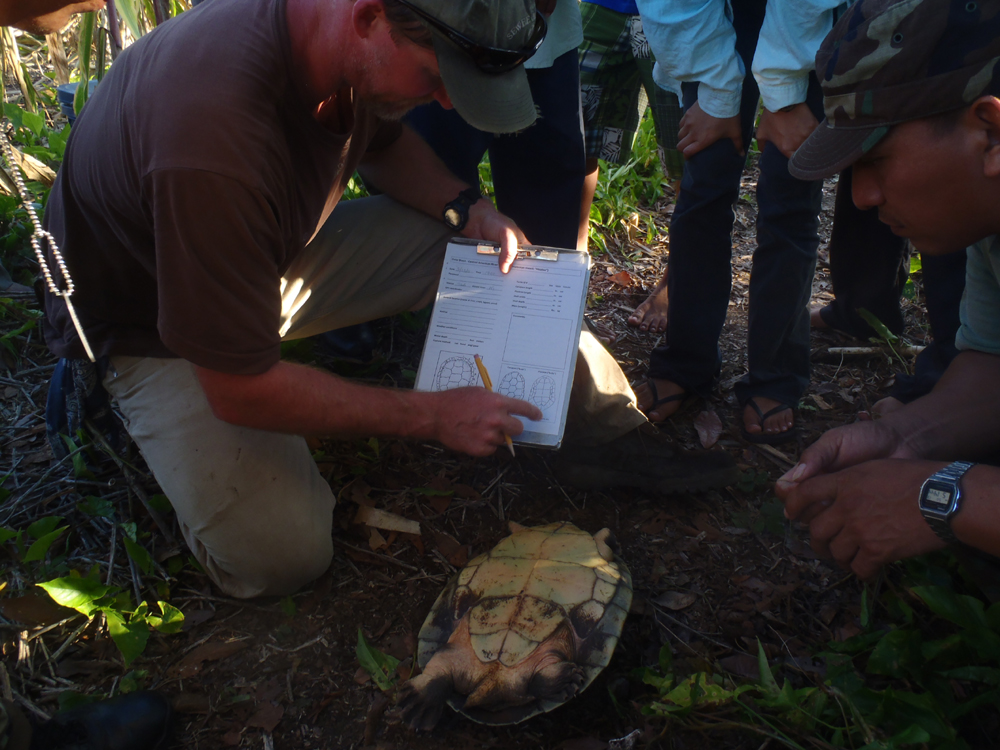Hicatee Conservation Workshops in Belize
by Thomas Rainwater 

Just a quick note to say we just successfully completed the first of two Hicatee (Central American River Turtle, Dermatemys mawii) Survey and Monitoring Workshops in Belize. This first workshop was conducted on the Rio Grande in southern Belize, near the town of Punta Gorda. The second workshop begins tomorrow on the New River Lagoon in northern Belize.

The primary purpose of these workshops is to teach Belizeans standardized methods for surveying and monitoring Dermatemys throughout the country so the status of this Critically Endangered turtle can be examined on a broader scale and a more consistent basis. Results of our (TSA) country-wide survey last spring (2010) indicated that Dermatemys populations in Belize continue to decline from overharvesting and to a lesser extent habitat loss and degradation. Following our report, a Hicatee Conservation Forum and Workshop was held at the University of Belize in December 2010, at which the National Hicatee Conservation and Monitoring Network (NHCMN) was formed. The NHCMN has quickly sprung into action with Dermatemys conservation initiatives on multiple fronts, and our survey and monitoring workshops are part of this effort.

For the Rio Grande workshop, we had a great group of attendants representing several key groups in Belize including the Belize Fisheries Department, the Belize Foundation for Research and Environmental Education (BFREE), the Community Baboon Sanctuary (CBS), the Environmental Research Institute (ERI)/University of Belize, the Toledo Institute for Development and Environment (TIDE), and Ya'axché Conservation Trust (YCT).

We all met in Punta Gorda on March 12th and had a brief orientation before heading into the field. For the next two and half days, trainees learned netting and spotlight survey techniques, as well as methods of determining gender, collecting morphometric measurements, and marking captured turtles before release. Importantly, the trainees also learned how to record data on standardized data sheets (provided) so that information from surveys conducted around the country can be stored in a central database and compared.

The group was bright, highly enthusiastic, and caught on quickly. We captured five hicatee during the workshop and saw several others. It was telling that the only people in our group of 13 that had ever actually seen a hicatee before were the three of us that conducted surveys in 2010 and an older gentleman with the Fisheries Department that used to hunt Dermatemys in his younger days. Everyone was elated to finally see up-close the turtle that they are working so hard to protect.
